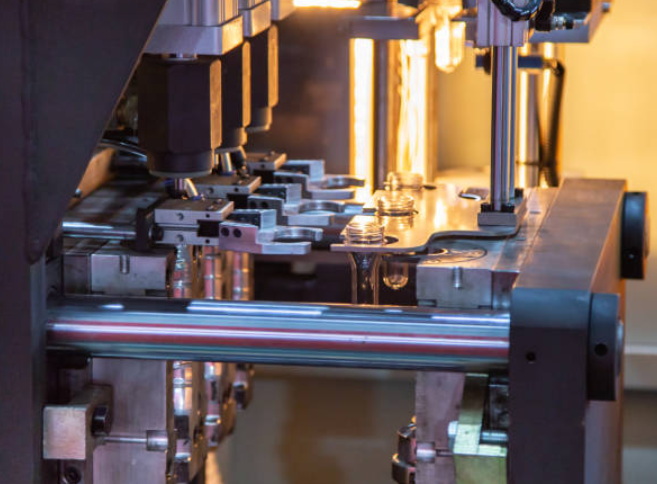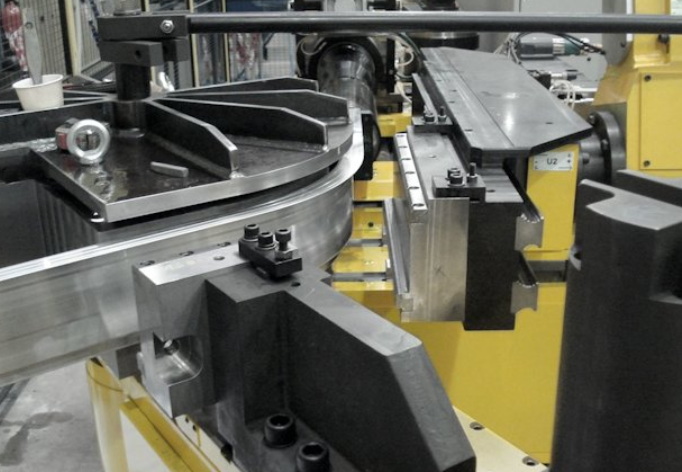Content Menu
● Introduction to Extrusion Equipment and Dies
>> Role of Dies in Extrusion
● Importance of High-Quality Dies
>> Factors Influencing Die Quality
● Design and Manufacturing of Extrusion Dies
>> Die Design Criteria
>> Manufacturing Techniques
● Common Issues with Extrusion Dies
>> Solutions to Common Issues
● Impact on Extrusion Equipment Efficiency
>> Case Study: Aluminum Extrusion
>> Advanced Technologies in Die Design
● Economic Benefits of High-Quality Dies
● Environmental Impact
● Conclusion
● Frequently Asked Questions
>> 1. What is the role of extrusion dies in manufacturing?
>> 2. How do high-quality dies improve extrusion efficiency?
>> 3. What factors affect the lifespan of extrusion dies?
>> 4. What are common issues with extrusion dies?
>> 5. How does die design impact extrusion quality?
Extrusion equipment and dies are pivotal components in the manufacturing of various materials, including plastics and metals. The efficiency of extrusion processes heavily relies on the quality of the dies used, as they directly influence the final product's shape, quality, and production speed. In this article, we will delve into the importance of high-quality dies in extrusion equipment, exploring their role in enhancing efficiency and productivity.

Introduction to Extrusion Equipment and Dies
Extrusion is a manufacturing process where raw materials are forced through a die to create a desired shape. This process is widely used in industries such as construction, automotive, and electronics for producing profiles, tubes, and sheets. The die, made from hardened steel like H13, acts as a mold that shapes the material into the required cross-sectional profile.
Role of Dies in Extrusion
Dies are essential for maintaining dimensional accuracy, surface finish, and overall product quality. They dictate the cross-sectional shape of the extruded material, ensuring it meets specific application requirements. Well-designed dies streamline production by reducing material resistance, leading to faster cycles, lower energy consumption, and reduced equipment wear.
Importance of High-Quality Dies
High-quality dies are crucial for several reasons:
1. Dimensional Accuracy: They ensure that the extruded profiles have precise dimensions, which is vital for applications where fit and function are critical.
2. Surface Finish: High-quality dies produce profiles with smooth surfaces, reducing the need for post-processing and enhancing aesthetic appeal.
3. Structural Integrity: By maintaining consistent mechanical properties, these dies ensure that extrusions have the required strength and durability for demanding applications.
4. Efficiency: Well-designed dies reduce material resistance, allowing for faster extrusion speeds and lower operational costs.
5. Longevity: High-quality dies last longer, reducing downtime and replacement costs associated with frequent die changes.
Factors Influencing Die Quality
Several factors contribute to the quality and efficiency of extrusion dies:
- Material Selection: Using high-quality steel like H13 ensures durability and thermal conductivity.
- Design and Geometry: The die's design must facilitate uniform material flow to prevent defects like warping or uneven thickness.
- Surface Treatments: Coatings such as nitriding enhance wear resistance and extend die life.
- Thermal Management: Effective cooling and heating strategies maintain consistent temperatures, preventing thermal defects.
Design and Manufacturing of Extrusion Dies
The design and manufacturing of extrusion dies involve several key considerations:
Die Design Criteria
1. Material Flow: Ensuring uniform flow through the die is critical for preventing defects and maintaining product quality.
2. Thermal Conductivity: The die material should have good thermal conductivity to manage temperature variations during extrusion.
3. Structural Integrity: The die must withstand high pressures and temperatures without compromising its structure.
Manufacturing Techniques
1. CNC Machining: Computer-aided design and CNC machining ensure precision and consistency in die production.
2. Finite Element Analysis (FEA): FEA simulations help optimize die design by predicting material flow and thermal behavior.
3. Heat Treatment: Proper heat treatment processes balance hardness and toughness, ensuring the die can withstand extrusion pressures.
Common Issues with Extrusion Dies
Despite their importance, extrusion dies can encounter several issues:
1. Leakage: Often caused by improper adjustments or wear, leakage can lead to defects and reduced efficiency.
2. Flow Marks and Die Lines: These defects result from uneven material flow or die wear, affecting product quality.
3. Modification Challenges: Altering die designs can be complex and costly, requiring precise adjustments to maintain performance.
Solutions to Common Issues
- Regular Maintenance: Regular inspections and maintenance can prevent premature wear and extend die life.
- Precision Adjustments: Using advanced tools and techniques for die adjustments minimizes the risk of defects.
- Material Upgrades: Upgrading die materials or applying surface treatments can enhance durability and performance.

Impact on Extrusion Equipment Efficiency
High-quality dies significantly enhance the efficiency of extrusion equipment by:
1. Reducing Downtime: Well-designed dies minimize the need for frequent replacements and adjustments, reducing production downtime.
2. Increasing Production Speed: By reducing material resistance, high-quality dies allow for faster extrusion speeds, increasing overall productivity.
3. Improving Product Quality: Consistent dimensions and surface finishes ensure that extrusions meet application requirements without additional processing.
Case Study: Aluminum Extrusion
Aluminum extrusion is a prime example where high-quality dies are crucial. The process involves heating aluminum billets and forcing them through a die to create profiles used in construction, automotive, and electronics industries. The precision required in aluminum extrusion highlights the importance of well-designed dies for maintaining dimensional accuracy and surface quality.
Advanced Technologies in Die Design
Recent advancements in technology have further optimized die design and manufacturing:
1. 3D Printing: Allows for complex geometries and rapid prototyping, enabling quicker design iterations and testing.
2. Simulation Software: Advanced software tools simulate material flow and thermal behavior, helping to predict and mitigate potential issues before production.
3. Artificial Intelligence (AI): AI can analyze production data to predict die wear and suggest maintenance schedules, reducing unexpected downtime.
Economic Benefits of High-Quality Dies
The economic benefits of using high-quality dies are substantial:
1. Reduced Operational Costs: By increasing production speed and reducing downtime, high-quality dies lower operational costs over time.
2. Improved Product Quality: Consistent quality reduces the need for rework or scrap, saving resources and enhancing customer satisfaction.
3. Long-Term Savings: Although high-quality dies may have a higher upfront cost, their extended lifespan and reduced maintenance needs lead to long-term savings.
Environmental Impact
High-quality dies also contribute to a more sustainable manufacturing process:
1. Energy Efficiency: By allowing for faster extrusion speeds and reducing the need for reprocessing, high-quality dies help minimize energy consumption.
2. Material Conservation: Consistent product quality reduces waste and the need for additional materials, aligning with environmental sustainability goals.
3. Reduced Emissions: Lower energy consumption and reduced production cycles contribute to fewer emissions, supporting a cleaner manufacturing environment.
Conclusion
High-quality dies are indispensable for achieving efficiency in extrusion equipment. By ensuring dimensional accuracy, surface finish, and structural integrity, these dies enhance production speed, reduce operational costs, and improve overall product quality. Understanding the importance of die design, material selection, and manufacturing techniques is crucial for optimizing extrusion processes.

Frequently Asked Questions
1. What is the role of extrusion dies in manufacturing?
Extrusion dies act as molds that shape raw materials into specific cross-sectional profiles during the extrusion process. They are essential for maintaining product quality and efficiency.
2. How do high-quality dies improve extrusion efficiency?
High-quality dies enhance efficiency by reducing material resistance, allowing for faster extrusion speeds, and minimizing downtime due to fewer defects and longer die life.
3. What factors affect the lifespan of extrusion dies?
Factors such as production volume, profile complexity, operating conditions, material quality, and maintenance practices influence the lifespan of extrusion dies.
4. What are common issues with extrusion dies?
Common issues include leakage, flow marks, and challenges in modifying die designs. These can be addressed through regular maintenance and precision adjustments.
5. How does die design impact extrusion quality?
Die design significantly impacts extrusion quality by influencing material flow, thermal management, and structural integrity. Well-designed dies ensure uniform flow and consistent product quality.






















